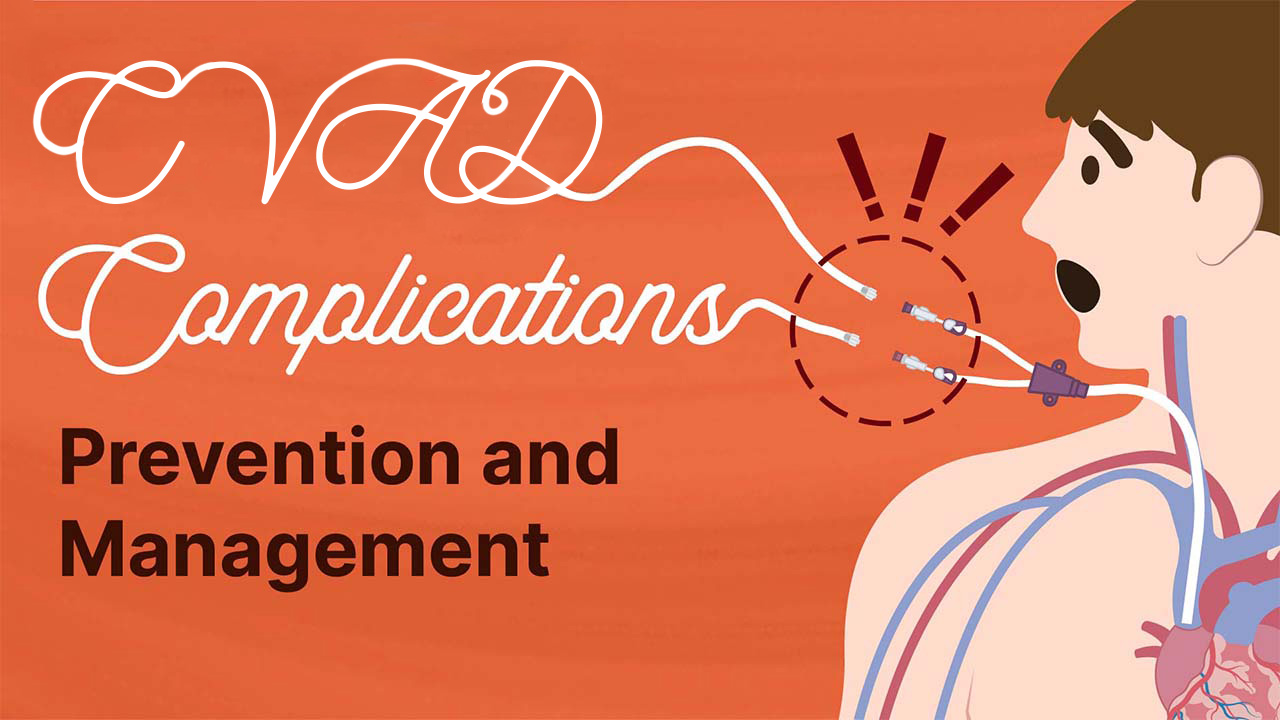CVAD Complications: Prevention and Management


Content
What you'll learn:
Identify and describe the common complications associated with central venous access devices (CVADs).
Demonstrate knowledge of the strategies and functions of using best-practice assessments in maintaining CVAD patency.
Understand the principles of infection prevention and control and apply evidence-based practices for the prevention and management of CVAD-associated infections.
Recognise best-practice assessment and management of common skin complications related to CVADs.
Apply appropriate teaching strategies to address individual patient needs, and promote patient adherence and active participation in the management of their CVAD.
Who it's for:
Why it's needed:
Central venous access devices (CVADs) are highly prevalent within inpatient and community healthcare settings across all populations and pose a high risk for complications to arise. Between 15–66% of CVADs may fail prematurely as a result of complications.
It is therefore crucial that healthcare professionals caring for patients with these devices have an in-depth and up-to-date understanding of the various kinds of complications that can occur, prevention strategies, and how to manage treatment in partnership with patients in order to maintain safety and achieve optimal outcomes.
Purpose:
Topics
Assign mandatory training and keep all your records in-one-place.
Find out more
Recommended resources










 New
New